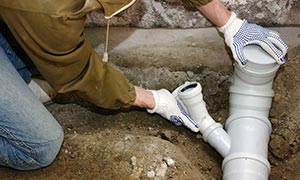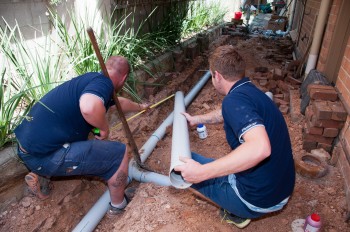The Best Kirkland Sewer Repair
 Are your pipes more than 30 years old? Have they been leaking more and more frequently and making strange noises? Chances are it's time to replace sections of your sewer line – or perhaps the entire system. We always come fully equipped to help you when your sewer line starts acting up. With the trusted and time-tested traditional sewer repair method, we'll have your home back in better-than- before condition in no time at all. Whether your problem was poorly designed and installed pipes, tree roots, or fractures caused by cold weather, we can fix your sewer line so you don't have to spend another day without working plumbing.
Are your pipes more than 30 years old? Have they been leaking more and more frequently and making strange noises? Chances are it's time to replace sections of your sewer line – or perhaps the entire system. We always come fully equipped to help you when your sewer line starts acting up. With the trusted and time-tested traditional sewer repair method, we'll have your home back in better-than- before condition in no time at all. Whether your problem was poorly designed and installed pipes, tree roots, or fractures caused by cold weather, we can fix your sewer line so you don't have to spend another day without working plumbing.
Why Opt For Trenched Sewer Repair over Trenchless?
You've probably heard about traditional repair and trenchless sewer repair, but do you actually understand the difference? Trenchless repair involves two methods: pipe lining, which involves injecting your pipes with epoxy resin and creating a new, narrower pipes; and pipe bursting, which involves inserting a new pipe inside of the old one, blasting it away in the process. The problem with these methods is that some pipes are simply too far gone for trenchless repair to be effective. Too many fractures and sags in the pipe (called “bellied” pipes) require traditional trenchless repair. Pipe lining, if done improperly, can result in the resin not being cured correctly, resulting in a weak pipe that needs to be repaired soon after installation.
We Choose Methods That Work Every Time
Our plumbing technicians prefer traditional sewer replacement and repair because it works, not just some of the time, but every time. Additionally, it is much easier to avoid electrical and gas lines that, if damaged, can cause further dangers and more costly repairs for you.
Traditional repair is overall more friendly to your wallet, and we know you care about that.
What Can I Do To Prevent Pipe Blockages?
After your sewer line has be repaired, you might be wondering what preventative measures you can take to maintain the health and longevity of your line. Our technicians will gladly provide you with routine preventative maintenance and video inspections to ensure no nasty blockages have formed. Additionally, you can make sure not to flush any non-humane waste products down the drain. This includes sanitary products, grease, coffee grounds, hair, and other materials that do not break down once they enter your sewer line. Make sure to clean hair and soap residue out of your shower and sink drains regularly, since these materials can move further down your pipes and become unreachable and destructive.
Call Us For A Bid On your Sewer Repair or Replacement Job Today
We give accurate on-site estimates before all sewer repair jobs, so you'll know just what to expect. Schedule your no hassle, no obligation bid today.